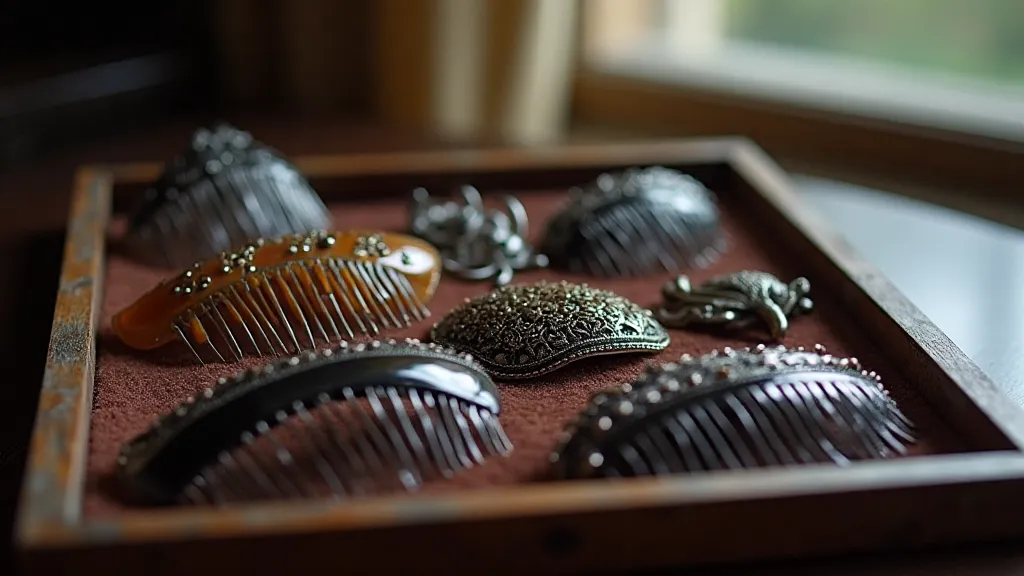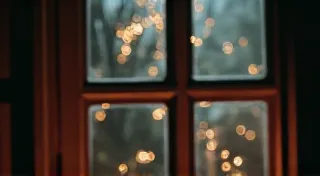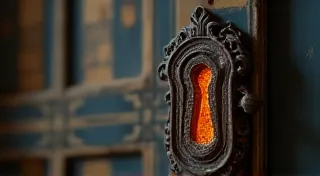Crimson Threads & Amber Hues: The Influence of Victorian Mourning Jewelry on Hair Comb Design
The delicate click of a vintage hair comb against a satin ribbon – a sound that transports you to another time. Collecting these small treasures isn's just about acquiring pretty objects; it's about holding a piece of history, a whisper of bygone eras. And when we delve into the world of Victorian hair combs, a surprising and profoundly moving connection emerges: the profound influence of Victorian mourning practices.
The Victorian era (1837-1901) was marked by an elaborate and deeply ingrained culture of mourning. Death was a constant companion; life expectancy was considerably shorter than it is today, and infant mortality rates were tragically high. Grief wasn't something to be hidden or rushed; it was a visible, accepted, and even expected part of life. This led to the development of elaborate mourning rituals and customs, often expressed through specialized jewelry and accessories – and those traditions significantly impacted the design of seemingly simple hair combs.
Before understanding the connection, it's important to appreciate the role hair combs played in Victorian hairstyles. Women's hair was a canvas for elaborate styling, often piled high with curls, braids, and embellishments. Hair combs, ranging from simple tortoiseshell pieces to ornate creations of jet and silver, were essential for securing these complex looks. They weren't merely functional; they were statements of fashion and social standing.
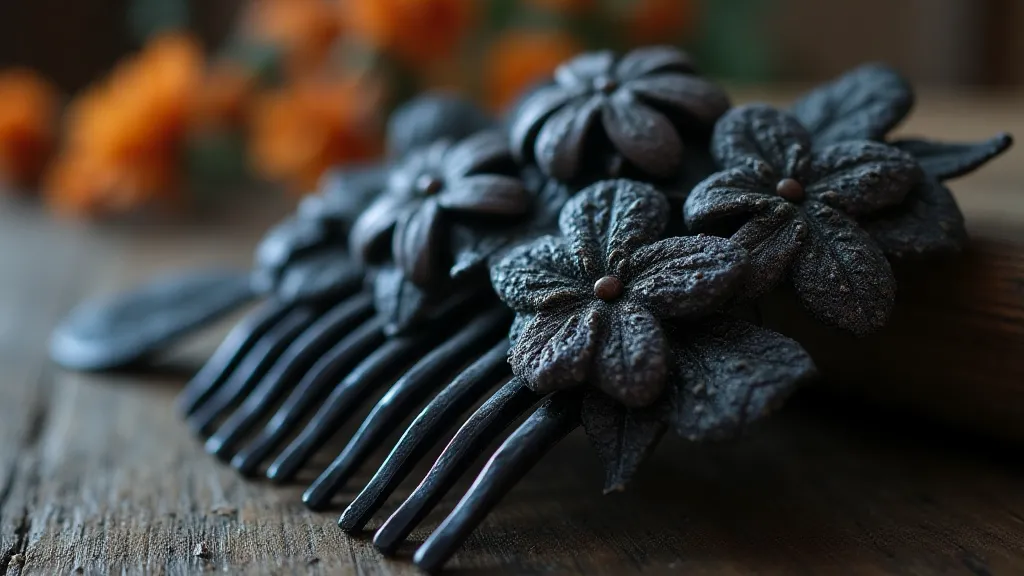
The Colors of Grief: Jet, Worn Jet, and Mourning Materials
The most immediate link to mourning is the prevalence of jet in Victorian hair comb design. Jet, a fossilized form of wood, is an intensely black material that was considered a perfectly acceptable, and often preferred, material for mourning jewelry and hair ornaments. Its dark color symbolized grief and represented a visual marker of mourning for a loved one. Entire wardrobes, known as “mourning attire," would be constructed in jet for a period ranging from one to seven years, depending on the relationship to the deceased.
But the use of jet wasn't the only indicator. “Worn jet” – jet that had been deliberately aged to appear older and more subdued – was also popular. This intentional patina spoke to a deep sense of loss and remembrance. Other materials used in mourning combs included black glass, vulcanite (a type of hard rubber), and later, black enamels. Even the incorporation of human hair – often from the deceased – into combs, though rarer, was a deeply personal expression of grief.
The Victorian period also established a complex hierarchy of mourning colors and materials. The first year of mourning typically involved complete blackness. Afterwards, colors gradually transitioned from deep purple to grey, and finally to mauve, all signifying different stages of the grieving process. These nuanced color shifts also subtly influenced hair comb design, with early mourning combs being uniformly black, and later combs incorporating those progressively lighter shades.
Beyond Black: The Symbolic Language of Flowers
The symbolism of flowers was central to Victorian culture, and mourning was no exception. Specific flowers were associated with particular emotions and meanings, often woven into the designs of mourning jewelry and hair combs. Lilies, for example, represented innocence and purity, often associated with the soul departing for heaven. Forget-me-nots symbolized remembrance and enduring love. Roses, particularly white roses, conveyed innocence and mourning.
Imagine a delicate tortoiseshell comb, inlaid with tiny forget-me-nots, or a silver comb delicately carved with lilies. These weren’t just pretty decorations; they were coded messages, visual expressions of grief and enduring affection for the lost loved one. These weren't frivolous adornments; they were poignant reminders of those who had passed.
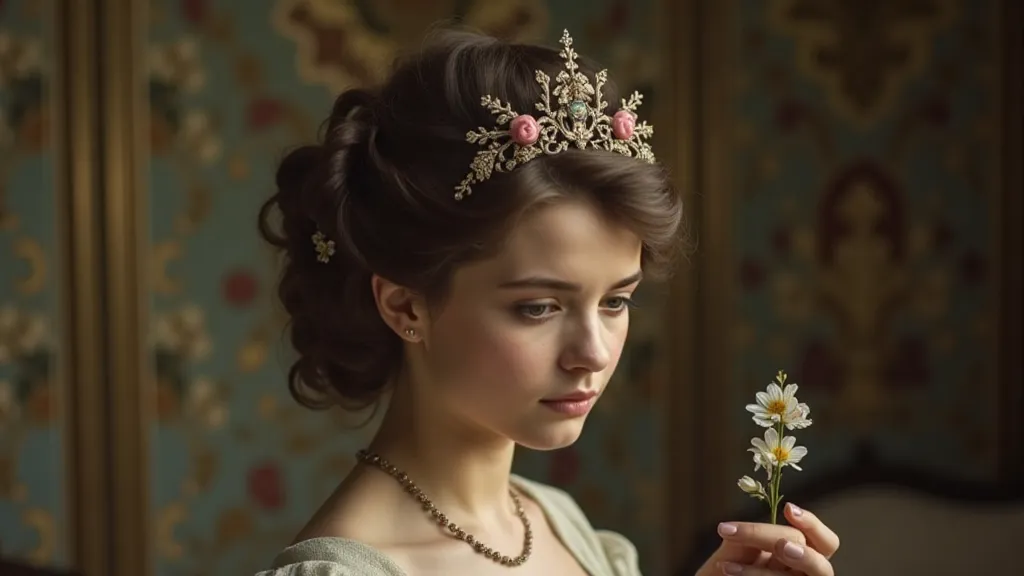
Craftsmanship and the Enduring Legacy
The hair combs of the Victorian era represent a remarkable level of craftsmanship. Many were crafted by skilled artisans who took immense pride in their work. The intricate carving of jet, the delicate inlay of materials, the precision of the silver filigree – these all required a high degree of skill and dedication. The materials themselves, whether they were meticulously sourced jet or carefully chosen tortoiseshell, were chosen for their quality and durability.
Today, these combs are highly sought after by collectors, not just for their aesthetic beauty, but for the story they tell. Holding a Victorian mourning comb isn't just holding a piece of jewelry; it's holding a connection to a past era, a tangible link to the customs and emotions of a bygone age.
Collecting and Caring for Vintage Mourning Combs
When collecting vintage mourning combs, understanding their history is key. Research the materials – jet is heavier than glass or vulcanite, for example. Examine the craftsmanship closely. Look for hallmarks or maker's marks, which can provide valuable information about the comb’s origin and age.
Restoration should be approached with caution. Cleaning should be gentle, using soft cloths and mild soap. Avoid harsh chemicals, which can damage the materials. If a comb is broken, professional repair is recommended. Remember, the beauty of these pieces lies not only in their perfection but also in their history, their character, and the subtle signs of time they bear.
The connection between Victorian mourning practices and hair comb design is a poignant reminder of the human capacity for grief and remembrance. These small treasures, once emblems of loss, now offer a glimpse into a fascinating era and a beautiful example of how sorrow can be transformed into art.
